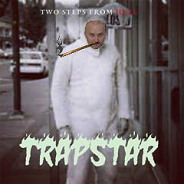Official Everybody Edits Forums
Do you think I could just leave this part blank and it'd be okay? We're just going to replace the whole thing with a header image anyway, right?
You are not logged in.
- Topics: Active | Unanswered
Pages: 1
#1 Before February 2015
- Hexagon
- Member
- Joined: 2015-04-22
- Posts: 1,213
Is there a bot that can...
I'm looking for a bot that determines whether a specific EE level is possible. It doesn't have to be 100% correct (50% or so will do), even if it just finds the possible path(s) and does a simple computation to sorta check. Does one exist?
Offline
#2 Before February 2015
- ewoke
- Member

- Joined: 2015-02-20
- Posts: 412
Re: Is there a bot that can...
dont think so
if you can read this....good for you
Offline
#3 Before February 2015
- Processor
- Member

- Joined: 2015-02-15
- Posts: 2,246
Re: Is there a bot that can...
Define "whether a specific EE level is possible" There is no such thing as winning in every EE level.
Last edited by Processor (Jan 5 2015 9:23:17 am)
I have never thought of programming for reputation and honor. What I have in my heart must come out. That is the reason why I code.
Offline
#4 Before February 2015
- Zumza
- Member
- From: root
- Joined: 2015-02-17
- Posts: 4,662
Re: Is there a bot that can...
I think he ask for the old CreateJoinRoom
Warning!
This user has been found guilty by The Committee of Truth of using honesty, and reminding people of the past, without permission and outside of the allotted timeframes.
I’ve been asked if I’m ChatGPT5.
The answer is no.
I hope this helps! Let me know if you have any other questions.
Everybody edits, but some edit more than others
Offline
#5 Before February 2015
Re: Is there a bot that can...
He is talking about a bot that finds the possible paths of a mini.
Example:
# = Block
C = Crown
P = Path
O = Player default position
############
# # CPPPP #
# ########P #
# OPPPPP #
############
He asks for a bot that can detect the 'P' of a mini. I dont think it exists.

Offline
#6 Before February 2015
- Zumza
- Member
- From: root
- Joined: 2015-02-17
- Posts: 4,662
Re: Is there a bot that can...
With some backtracking it can be done. If Hexagon will want to make this it will become The Biggest EE Project.
Warning!
This user has been found guilty by The Committee of Truth of using honesty, and reminding people of the past, without permission and outside of the allotted timeframes.
I’ve been asked if I’m ChatGPT5.
The answer is no.
I hope this helps! Let me know if you have any other questions.
Everybody edits, but some edit more than others
Offline
#9 Before February 2015
- TiKen
- Member
- Joined: 2015-02-24
- Posts: 298
Re: Is there a bot that can...
I had an idea like this for EEPainter, But was too lazy to copy the physic engine. Also, this will be a VERY heavy stuff, RAM and CPU...
Offline
#10 Before February 2015
- Jabatheblob1
- Member
- Joined: 2015-03-01
- Posts: 856
Re: Is there a bot that can...
Tako had plans for this but gave up
If you would like me to make a bot for you, go here.
Offline
#11 Before February 2015
- Hexagon
- Member
- Joined: 2015-04-22
- Posts: 1,213
Re: Is there a bot that can...
He is talking about a bot that finds the possible paths of a mini.
Example:
# = Block
C = Crown
P = Path
O = Player default position############
# # CPPPP #
# ########P #
# OPPPPP #
############He asks for a bot that can detect the 'P' of a mini. I dont think it exists.
This is pretty much (what ZeldaXD said) is my idea.
---
Basically, you give the bot a level. Give it a start and end point, and it'll check if it is possible to complete using EE physics. This bot would ignore boosters (unless someone is awesome with physics; it's way over my head for boosters).
A good idea might be to start with the basics (just a plain ol' level, no boosters, doors and such) and do some tests. Data is currently being collected which may aid in this process.
I'm assuming this process contains several components, including:
- Check whether the start and end points are null spaces
- Check whether any path can be drawn between the two points
- Make sure that all jumps are possible (not too long) and such.
Problems
- Keys. When one presses a key, how quickly can a user complete a certain section before the door closes?
- Difficulty. Just because a computer can do it, doesn't mean that a person can (easily) do it.
- Computation. Unless an efficient algorithm is developed, it may take hours to compute large levels.
Define "whether a specific EE level is possible" There is no such thing as winning in every EE level.
Winning as in having the ability to start from point A, and touch or end at point B.
I definately need help with this project. If anyone is interested, feel free to post here/contact me!
Last edited by Hexagon (Jan 5 2015 5:57:03 pm)
Offline
#12 Before February 2015
- Jabatheblob1
- Member
- Joined: 2015-03-01
- Posts: 856
Re: Is there a bot that can...
There are so many different things to check for, it's extremely extensive.
If you would like me to make a bot for you, go here.
Offline
#13 Before February 2015
- TiKen
- Member
- Joined: 2015-02-24
- Posts: 298
Re: Is there a bot that can...
Regarding computation, I suggest a heristic for the shortest path (A* style ?). The problem is the following: you need in every point reachable, store the speed in each direction. The problem in this problem is: you can reach the same point in a thousand ways. Each way can lead to a different path. Will lead to a different path. How are you going to store them all? In each pixel already "visited" a list of actions linked with coordinates where they where taken leading to the said point?
I'm not even counting the "spam space for ten minutes, then try to finish the level"...
You'll have to define rules such as how to detect a loop or a shorter path : Can I reach this place in another way? Does this other way leads to the exact same configuration? (Id est, can I continue with the same speed?)
Good luck...
Offline
#14 Before February 2015
- Hexagon
- Member
- Joined: 2015-04-22
- Posts: 1,213
Re: Is there a bot that can...
Regarding computation, I suggest a heristic for the shortest path (A* style ?). The problem is the following: you need in every point reachable, store the speed in each direction. The problem in this problem is: you can reach the same point in a thousand ways. Each way can lead to a different path. Will lead to a different path. How are you going to store them all? In each pixel already "visited" a list of actions linked with coordinates where they where taken leading to the said point?
I'm not even counting the "spam space for ten minutes, then try to finish the level"...
You'll have to define rules such as how to detect a loop or a shorter path : Can I reach this place in another way? Does this other way leads to the exact same configuration? (Id est, can I continue with the same speed?)
Good luck...
A* would be a good option, but the problem is (as you said) it has to be reachable; the shortest path may be impossible. Maybe a modified version of A*, or compute all A* paths and process which one is possible. Possibly:
- start at point A
- lookahead 1x1 blocks (one block on the top, one on the top right hand corner, etc...)
- if there is a possible move, move there.
- if there is no possible move, expand the search to n, where n is the largest amount of blocks that can be jumped
- if there is another possibility while expanding the search, remember it, and visit it later if the current method does not work
- if a suitable location is found, move to that location and repeat the process
However, this method doesn't consider EE physics, which might be complicated.
If one has an extremely fast computer, one can compute all possible combinations, so 2^n where n = (length * width) of the level, then remove the ones that are impossible (don't touch the finish line and/or don't touch the start point; go through a block; are not connected). Unfortunately a 6x6 level turns into 68,719,476,736 possibilities, which is way too many.
Last edited by Hexagon (Jan 5 2015 7:16:30 pm)
Offline
#15 Before February 2015
- Jabatheblob1
- Member
- Joined: 2015-03-01
- Posts: 856
Re: Is there a bot that can...
are you planning on actually making this?
If you would like me to make a bot for you, go here.
Offline
#17 Before February 2015
- Zumza
- Member
- From: root
- Joined: 2015-02-17
- Posts: 4,662
Re: Is there a bot that can...
I think if we start from end point to start point will be easy. Easy to check for action blocks(e.g.. boosts)
Edit: OK maybe just in some situations will be harder.
Last edited by The Doctor (Jan 6 2015 5:50:41 am)
Warning!
This user has been found guilty by The Committee of Truth of using honesty, and reminding people of the past, without permission and outside of the allotted timeframes.
I’ve been asked if I’m ChatGPT5.
The answer is no.
I hope this helps! Let me know if you have any other questions.
Everybody edits, but some edit more than others
Offline
#18 Before February 2015
- Koya
- Fabulous Member

- From: The island with those Brits
- Joined: 2015-02-18
- Posts: 6,310
Re: Is there a bot that can...
I guess you'd first need a standard maze algorithm to see if a path is possible (through portals too), then to see if any unassisted jumps aren't 4 blocks or higher (then continue with more gravity until terminal velocity), also how many spaces from resistive gravity (3:1, 7:2, 13:3) you also need to account for portal velocity conservation (sometimes with boosts it's non-conservation), now to account for keys, coindoors, timers and spikes.
For simple minigame worlds I think it is definitely possible, but for more complex worlds you would need it to flag any errors and validate it yourself.


Thank you eleizibeth ^

I stack my signatures rather than delete them so I don't lose them

Offline
#19 Before February 2015
- Hexagon
- Member
- Joined: 2015-04-22
- Posts: 1,213
Re: Is there a bot that can...
For simple minigame worlds I think it is definitely possible, but for more complex worlds you would need it to flag any errors and validate it yourself.
Definately. It would not process the world or just ignore those elements (booster physics and mashing arrow keys in mathematics makes my head hurt).
Offline
#20 Before February 2015
- ugotpwned
- Member

- Joined: 2015-02-16
- Posts: 376
Re: Is there a bot that can...
Just finished a beta release version of a SDK I made for usage. Works pretty well, although it still could use a lot of improvement.
Source: https://github.com/ThyChief/EETuring
Download DLL: Download from mediafire
Quickstart guide:
Turing turingTester = new Turing(world); turingTester.OnProgress += turingTester_OnProgress; turingTester.OnComplete += turingTester_OnComplete; turingTester.SearchAsync(new Point(1, 23), new Point(23, 23));Last edited by UgotPwned (Jan 14 2015 7:44:14 pm)
Offline
#21 Before February 2015
- Hexagon
- Member
- Joined: 2015-04-22
- Posts: 1,213
Re: Is there a bot that can...
Just finished a beta release version of a SDK I made for usage. Works pretty well, although it still could use a lot of improvement.
Source: https://github.com/ThyChief/EETuring
Download DLL: Download from mediafire
Quickstart guide:
Turing turingTester = new Turing(world); turingTester.OnProgress += turingTester_OnProgress; turingTester.OnComplete += turingTester_OnComplete; turingTester.SearchAsync(new Point(1, 23), new Point(23, 23));
Whoa, that's awesome ![]() ! Thanks so much! Would one be allowed to make a web api for that?
! Thanks so much! Would one be allowed to make a web api for that?
Last edited by Hexagon (Jan 15 2015 11:51:39 am)
Offline
#22 Before February 2015
- ugotpwned
- Member

- Joined: 2015-02-16
- Posts: 376
Re: Is there a bot that can...
Sure go right ahead, I really just made it because of this topic. I'm probably not even going to put a license on it.
Offline
#23 Before February 2015
- TiKen
- Member
- Joined: 2015-02-24
- Posts: 298
Re: Is there a bot that can...
So how did you got there? What kind of algo did you use? =P
Offline
#24 Before February 2015
- Master1
- Member

- From: Crait
- Joined: 2015-02-15
- Posts: 4,452
Re: Is there a bot that can...
Why would you even need this? I'm pretty sure any level worth playing has been tested enough to make sure that it's possible.



Offline
#25 Before February 2015
- Buzzerbee
- Forum Admin

- Joined: 2015-02-15
- Posts: 4,578
Re: Is there a bot that can...
Why would you even need this? I'm pretty sure any level worth playing has been tested enough to make sure that it's possible.
It's just fun to code random things like this. Although this is a lot more complex than other random things people usually code

![]()
Offline
Pages: 1
[ Started around 1743858945.8703 - Generated in 0.137 seconds, 10 queries executed - Memory usage: 1.72 MiB (Peak: 1.97 MiB) ]
